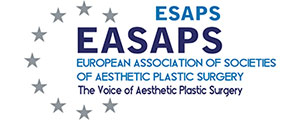VOLTAR
IMCAS World Congress 2023
IMCAS World Congress 2023
Programa
S235
Breast shaping approach (in collaboration with EASAPS)
Sala: Amphi Havane - Level 3
Data: sábado 28 janeiro 2023 de 08:30 às 10:00
Formato: WORKSHOP DE ANATOMIA > combinação de dissecações anatômicas em paralelo com procedimentos ao vivo realizados em pacientes
Data: sábado 28 janeiro 2023 de 08:30 às 10:00
Formato: WORKSHOP DE ANATOMIA > combinação de dissecações anatômicas em paralelo com procedimentos ao vivo realizados em pacientes
Apresentações desta sessão
| Horas | Palestrantes | Título da apresentação | Resumo | Número |
| 08:30 | Transaxillar breast augmentation with and without endoscope aim at different outcomes | Visualizar | 122258 | |
| 08:45 | Tricomposite breast remodeling following implant removal using the PALL technique | 122145 | ||
| 09:00 | Using mesh in mastopexy: different mesh, different outcome | 122140 | ||
| 09:15 | Achieving aesthetic outcomes in breast reconstruction | 122147 | ||
| 09:30 | Breast cleavage (décolleté) area: a neglected area in breast augmentation and rejuvenation | 122259 | ||
| 09:45 | Discussion and Q&A | 122260 | ||













